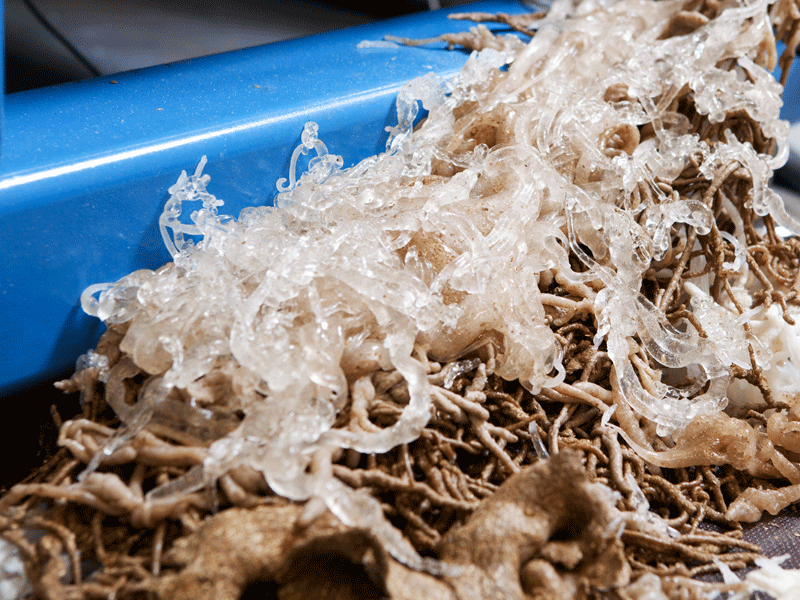
VTT Technical Research Centre of Finland has developed a cylindrical extruder which it says could revolutionise the processing of recyclable materials and thereby promote circular economy business. The extruder could be used, for example, to turn problematic textiles and plastics as well as food waste into pellets.
According to VTT, the first prototype has already exceeded the industrial steering group's expectations during initial testing, and it is now looking for a partner to commercialise the technology.
VTT's research scientists have been testing the prototype's performance with, for example, pieces of plastic film, mixed plastic waste, various kinds of textiles and bread. In addition to recycling, the device has been used to produce long fibre composites, and could also be utilised in food and feed processing.
For the packaging industry, the clearest applications would be for "flexible and fluffy plastic waste," said VTT's Principal Scientist, Tomi Erho. "There would also be the potential to combine plastic waste with fibrous waste to form composites. Multi-layer plastics could be at least compressed to transport for energy use, unless someone has ideas for other uses for ‘mixed plastics’ pellets.”
A step forward in waste processing
Behind the idea for the new extruder is VTT's Research Scientist Hannu Minkkinen, who discovered that materials can rotate around the device's hollow cylinder.
According Mr Erho, the research team has achieved a ten-fold increase in the size of the feed throat of this extruder, compared to traditional extruders with the same capacity. Something he calls a ‘complete revolution’ in design parameters in terms of the screw diameter / feed throat (‘they go hand-in-hand’, he tells us) vs the length of the extruder.
“The hollow inside the screw opens possibilities e.g. to control the temperature in a more precise manner, which could be important if some reactions are wanted / not wanted inside the extruder.”
VTT also says the large diameter combined with a shallow screw channel makes it possible to mix different components of problematic, porous and lightweight materials and to make the mixed mass compatible with the next stage of the production process.
"Many textile recycling processes are only suitable for products containing homogeneous fibres. However, textiles are often made of a mix of fibres, and many products are comprised of different layers. The new extruder opens up a revolutionary opportunity to recycle mixed textiles and materials without having to separate fibres or components. We have successfully tested the device, for example, for recycling pillows without removing the filling in the course of a project called Telaketju with funding from Business Finland,” says Senior Scientist Pirjo Heikkilä from VTT.
Commercial possibilities
The device was designed and the prototype built with funding from Business Finland's and VTT's funding instrument for commercialisation of research results.
"Commercialising the device would create completely new possibilities both in terms of waste processing and novel material combinations," said Tomi Erho.
“We wish to find partners who are ready to commercialise the technology and make it available for users in multiple different industries with varying needs. We have plenty of interest from potential users of the technology and with the press release have generated interest also among machine manufacturers.”














